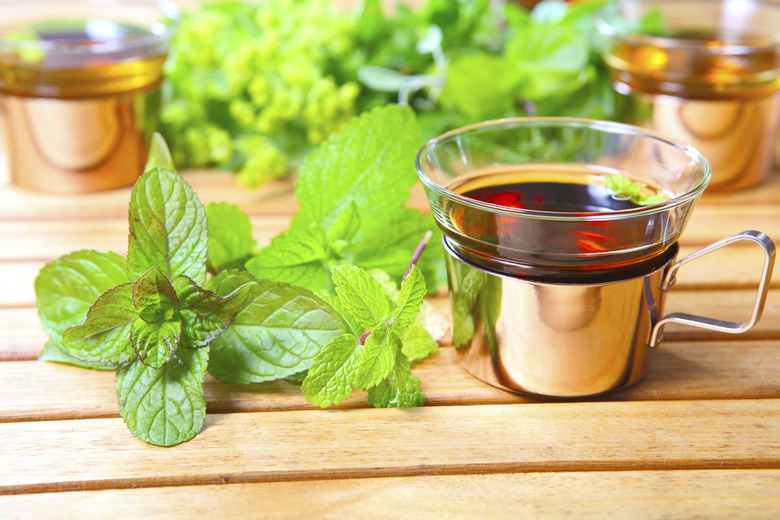Why Is My Mint Plant Growing With Black Spots On The Leaves?
We may receive a commission on purchases made from links.
Is your mint plant growing with black spots on the leaves? Mint (Mentha spp.) grows tenaciously, but even this tough plant, which grows as a perennial in U.S. Department of Agriculture plant hardiness zones 4 through 9 (depending on species), isn't immune to problems. When mint starts growing black spots on its leaves, your plants are likely suffering from leaf blight or advanced stages of mint rust. Once mint develops black spots, it's important to act quickly to prevent the disease from spreading.
Tip
Black spots on mint leaves often occur due to leaf blight or mint rust.
Mint Leaf Blight
Mint Leaf Blight
Leaf blight affects mint plants already in a weakened state, usually from mint rust. Though not a common disease, leaf blight works rapidly, causing whole leaves to turn black and fall prematurely. It often starts as irregularly shaped black spots that take over and kill the leaves. It can also move down into the stem. The leaf blight fungus (Cephalosporium spp.) can strike any time of year, but you're most likely to see it during damp winters and cool, wet fall or spring weather.
Mint Rust on Mint Plants
Mint Rust on Mint Plants
Much more common than leaf blight, mint rust weakens mint plants and, if left unchecked, it can set the stage for leaf blight to take hold. Mint rust first appears as small, bright orange spots with a dusty appearance on the undersides of the leaves in late spring and summer. In late summer, mint rust appears yellow and by fall, the mint plants can have black spots on the leaves. The spots are caused by the fungal spores of the mint rust fungus (Puccinia menthae). It can cause the leaves to die and fall off of the mint plant, and it can spread to other mint plants in the area.
Remove Affected Plants
Remove Affected Plants
Dig up and discard mint plants suffering from advanced mint rust as soon as possible, ideally before there are blacks spots on the leaves. Even after the disease advances, you can control the spread by getting rid of the affected plants. If you notice early stages of rust on other plants in the area, cut off the affected leaves. Mint that has leaf blight should also be discarded, as there is no way to cure the disease.
Keep It Clean
Keep It Clean
When working with mint plants affected by diseases like mint rust and leaf blight, sanitize your pruning tools each time you move to a new plant or to a healthy section of a diseased plant. Keep a small bucket of rubbing alcohol nearby, and dip your shears, hands and any other tools into the solution as you work. After completing any pruning, leaf removal or plant removal, disinfect your tools again and leave them to air dry before you put them away.
Mint Growing Practices
Mint Growing Practices
While good plant care isn't a guarantee against mint rust and leaf blight, keeping your plants healthy helps prevent disease problems. Grow mint in full sun or light shade and keep the soil consistently moist. If you're growing mint in containers, keep the potting mix consistently moist. Mint grows aggressively and can be invasive. If possible, grow this fragrant herb in a large container to keep it from spreading.
